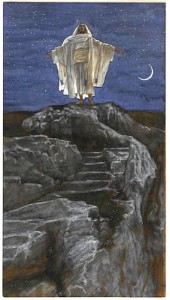 At the heart of our faith is the Paschal mystery: the Passion, death, resurrection, and ascension of Jesus Christ. All of salvation history leads up to and goes forth from these saving events. The purpose of this post is to describe Jesus’ final week. We call this “Holy Week” because Jesus’ public ministry culminates with His suffering, death, and resurrection.
At the heart of our faith is the Paschal mystery: the Passion, death, resurrection, and ascension of Jesus Christ. All of salvation history leads up to and goes forth from these saving events. The purpose of this post is to describe Jesus’ final week. We call this “Holy Week” because Jesus’ public ministry culminates with His suffering, death, and resurrection.
What follows is a brief description of each day of Holy Week. I hope you will print out this flyer (Walking-with-Jesus-In-Holy-Week) and read it each day this week. Prayerfully walk with Jesus in His most difficult yet most glorious week.
Some scholars of Scripture scoff at the idea that we can construct a day-by-day journal of Jesus’ last week. There are historical gaps and things in the different accounts that don’t add up perfectly. Further, St. John posits a slightly different timeframe (shifted by one day) for the Last Supper relative to Passover. The following sequence follows the timing of the synoptic (Matthew, Mark, and Luke) accounts. Despite certain scholarly doubts, the accounts really do add up pretty well if one uses a little imagination and sees the differences not as factual discrepancies but rather only as variations in the level of detail.
So read this chronology as a likely, but not certain, outline of the last week of Jesus. It is still a great blessing to consider the Lord’s last week and to walk with Him.
Plan to attend some or all of the special liturgies of Palm Sunday, Holy Thursday, Good Friday, and Holy Saturday at your parish. By celebrating them in community, we make them present today and we learn again, in a new way, the reality of our Risen Lord alive in our midst.
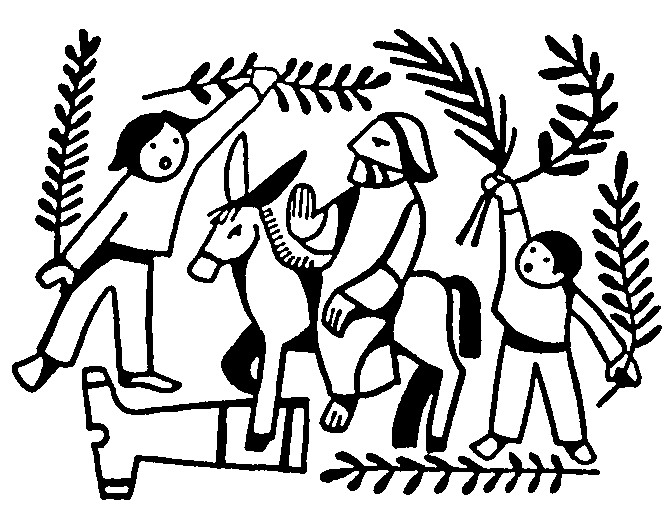 PALM SUNDAY – Our celebration of Holy Week begins today as we remember and make present the triumphal entrance of Jesus into Jerusalem to begin His final week and initiate His Passion. All four Gospels recount this triumphant entry that Sunday morning so long ago, but made present to us today. As you receive your palms, consider that you are part of that vast crowd. How will you journey with Jesus this week? Let the palms remind you to praise Him with your prayerful presence during the sacred Triduum. According to Mark 11:11, Jesus returned that evening to Bethany, a suburb of Jerusalem. Perhaps He stayed with his friends Martha, Mary, and Lazarus. Pray with Jesus this evening as He considers the difficult days ahead of Him.
PALM SUNDAY – Our celebration of Holy Week begins today as we remember and make present the triumphal entrance of Jesus into Jerusalem to begin His final week and initiate His Passion. All four Gospels recount this triumphant entry that Sunday morning so long ago, but made present to us today. As you receive your palms, consider that you are part of that vast crowd. How will you journey with Jesus this week? Let the palms remind you to praise Him with your prayerful presence during the sacred Triduum. According to Mark 11:11, Jesus returned that evening to Bethany, a suburb of Jerusalem. Perhaps He stayed with his friends Martha, Mary, and Lazarus. Pray with Jesus this evening as He considers the difficult days ahead of Him.
Monday of Holy Week – According to Matthew 21, Mark 11, and Luke 19, Jesus returned to Jerusalem this day and, seeing shameful practices in the Temple area, cleansed it. John’s Gospel also records that Jesus rebuked the unbelief of the crowds. Mark 11:19 records that Jesus returned to Bethany that night. Pray with Jesus as He is zealous in His desire to purify us.
Tuesday of Holy Week – According to Matthew, Mark, and Luke, Jesus again returned to Jerusalem where He was confronted by the Temple leadership for what He had done the previous day; they questioned His authority. Jesus also taught extensively using parables and other forms. There was the parable of the vineyard (cf Mt 21:33-46), the parable of the wedding banquet (cf Mt. 22:1), the teaching on paying taxes (cf Mt 22:15), and the rebuke of the Sadducees who denied the resurrection (cf Mt. 22:23). There was also the fearful prophecy about the destruction of Jerusalem if the inhabitants did not come to faith in Him: Jesus warned that not one stone would be left on another (cf Mt 24). Continue to pray with Jesus and listen carefully to His final teachings just before His Passion.
Wednesday of Holy Week – Traditionally this day was called “Spy Wednesday,” for it was on this Wednesday before the crucifixion that Judas conspired to hand Jesus over. For this he was paid thirty pieces of silver (cf Mt. 26:14). Jesus likely spent the day in Bethany. In the evening, Mary of Bethany anointed Jesus with costly perfumed oil. Judas objected but Jesus rebuked him, saying that Mary had anointed Him for His burial (cf Mt 26:6). The wicked are besetting Jesus and plotting against Him; are you praying?
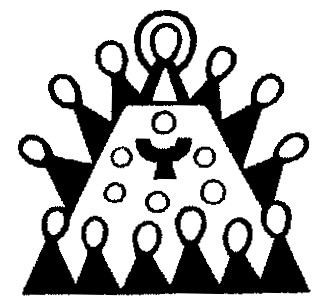 HOLY THURSDAY marks the beginning of the sacred Triduum, or “three days.” Earlier in the day, Jesus had given instructions to the disciples on how to prepare for this most holy meal, which would be His last supper. Throughout the day they made these preparations (cf Mt 26:17). In the Mass of the Lord’s Supper conducted at our parishes, we remember and make present that Last Supper which Jesus shared with His disciples. We are in the upper room with Jesus and the apostles and we do what they did. Through the ritual of washing the feet (Jn 13:1) of twelve parishioners, we unite in service to one another. Through our celebration of this First Mass and Holy Eucharist (Mt 26:26), we unite ourselves to Jesus and we receive His Body and Blood as if for the first time. At this Eucharist, we especially thank God for His gift of the ministerial priesthood. After the Last Supper (First Mass), Jesus and the apostles made a short journey across the Kidron Valley to the Garden, where He asked them to pray while He experienced His agony (cf Mt 26:30). We will process in Church with Jesus in the Blessed Sacrament to a garden (the altar of repose) that has been prepared. The liturgy ends in silence. It is an ancient custom to spend an hour before the reposed Blessed Sacrament this night. We are with Jesus in the Garden and we pray as He goes through His agony. Most of our parish churches remain open until close to midnight. It was nearly midnight when Jesus was betrayed by Judas, was arrested, and was taken to the house of the high priest (cf Mt. 26:47).
HOLY THURSDAY marks the beginning of the sacred Triduum, or “three days.” Earlier in the day, Jesus had given instructions to the disciples on how to prepare for this most holy meal, which would be His last supper. Throughout the day they made these preparations (cf Mt 26:17). In the Mass of the Lord’s Supper conducted at our parishes, we remember and make present that Last Supper which Jesus shared with His disciples. We are in the upper room with Jesus and the apostles and we do what they did. Through the ritual of washing the feet (Jn 13:1) of twelve parishioners, we unite in service to one another. Through our celebration of this First Mass and Holy Eucharist (Mt 26:26), we unite ourselves to Jesus and we receive His Body and Blood as if for the first time. At this Eucharist, we especially thank God for His gift of the ministerial priesthood. After the Last Supper (First Mass), Jesus and the apostles made a short journey across the Kidron Valley to the Garden, where He asked them to pray while He experienced His agony (cf Mt 26:30). We will process in Church with Jesus in the Blessed Sacrament to a garden (the altar of repose) that has been prepared. The liturgy ends in silence. It is an ancient custom to spend an hour before the reposed Blessed Sacrament this night. We are with Jesus in the Garden and we pray as He goes through His agony. Most of our parish churches remain open until close to midnight. It was nearly midnight when Jesus was betrayed by Judas, was arrested, and was taken to the house of the high priest (cf Mt. 26:47).
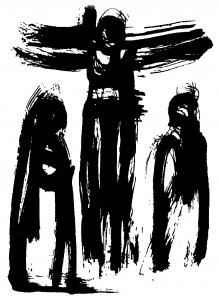 GOOD FRIDAY – All through the previous night, Jesus had been locked in the dungeon of the high priest’s house. Early in the morning He was brought before Pontius Pilate, who transferred the case to Herod. Herod promptly sent Him back to Pilate who, sometime in mid-morning, bowed to the pressure of the Temple leadership and the crowds and condemned Jesus to a horrible death by crucifixion. In the late morning, Jesus was taken by soldiers through the city and up the hillside of Golgotha. By noon He had been nailed to the Cross, where He hung in agony for some three hours. Jesus died at around three in the afternoon. He was taken down from the Cross and hastily placed in the tomb before sundown. Today is a day of prayer, fasting, and abstinence. To the extent possible, Christians are urged to keep today free of work, social engagements, and entertainment, devoting themselves to communal prayer and worship. At noon many parishes gather for Stations of the Cross and for recollections of the seven last words of Jesus. Many parishes also offer Stations of the Cross at 3:00 PM, the hour of Jesus’ death. In the evening, we gather quietly in our parish Churches to enter into a time of prayer, as we reflect on Jesus’ death on the Cross. We also pray for the needs of the world. To acknowledge the power of the Cross in our lives today, each of us in turn comes forward to venerate the Cross with a kiss. Our hunger from this day of fasting is satisfied with Holy Communion distributed at the end of this liturgy. Consider, too, how the apostles might have gathered that night together in fear and prayer, reflecting on all that had happened.
GOOD FRIDAY – All through the previous night, Jesus had been locked in the dungeon of the high priest’s house. Early in the morning He was brought before Pontius Pilate, who transferred the case to Herod. Herod promptly sent Him back to Pilate who, sometime in mid-morning, bowed to the pressure of the Temple leadership and the crowds and condemned Jesus to a horrible death by crucifixion. In the late morning, Jesus was taken by soldiers through the city and up the hillside of Golgotha. By noon He had been nailed to the Cross, where He hung in agony for some three hours. Jesus died at around three in the afternoon. He was taken down from the Cross and hastily placed in the tomb before sundown. Today is a day of prayer, fasting, and abstinence. To the extent possible, Christians are urged to keep today free of work, social engagements, and entertainment, devoting themselves to communal prayer and worship. At noon many parishes gather for Stations of the Cross and for recollections of the seven last words of Jesus. Many parishes also offer Stations of the Cross at 3:00 PM, the hour of Jesus’ death. In the evening, we gather quietly in our parish Churches to enter into a time of prayer, as we reflect on Jesus’ death on the Cross. We also pray for the needs of the world. To acknowledge the power of the Cross in our lives today, each of us in turn comes forward to venerate the Cross with a kiss. Our hunger from this day of fasting is satisfied with Holy Communion distributed at the end of this liturgy. Consider, too, how the apostles might have gathered that night together in fear and prayer, reflecting on all that had happened.
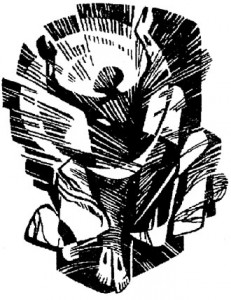 HOLY SATURDAY – The body of Jesus was in the tomb but His soul was among the dead, announcing the Kingdom. The hour is coming, and now is, when the dead will hear the voice of the Son of God, and those who hear it will Live (John 5:25). Consider what it must have been like for the dead in Sheol to awaken to the voice of Jesus! Meanwhile, the disciples, heartbroken at the death of Jesus, observed the Jewish Sabbath in sorrow. They had forgotten Jesus’ promise that He would rise. We cannot forget His promise. We cannot forget it. Tonight in our parishes, after sundown, we gather for the Great Easter Vigil, where we will experience Jesus’ rising from the dead. We gather in darkness and light the Easter fire, which reminds us that Jesus is light in the darkness. He is the light of the world. We enter into the church and listen attentively to Bible stories describing God’s saving work of the past. Suddenly, the church lights are lit and the Gloria is sung as we celebrate the moment of Christ’s resurrection. He lives! In the joy of the resurrection, we then celebrate the Sacraments of Baptism, Confirmation, and Eucharist for our catechumens and candidates, who have prepared for many weeks for this night. As a Church, we sing Alleluia for the first time in forty days. Do everything you can to be present on this evening, and invite friends and family to join you. Our Easter Vigil ushers in an Easter joy that never ends!
HOLY SATURDAY – The body of Jesus was in the tomb but His soul was among the dead, announcing the Kingdom. The hour is coming, and now is, when the dead will hear the voice of the Son of God, and those who hear it will Live (John 5:25). Consider what it must have been like for the dead in Sheol to awaken to the voice of Jesus! Meanwhile, the disciples, heartbroken at the death of Jesus, observed the Jewish Sabbath in sorrow. They had forgotten Jesus’ promise that He would rise. We cannot forget His promise. We cannot forget it. Tonight in our parishes, after sundown, we gather for the Great Easter Vigil, where we will experience Jesus’ rising from the dead. We gather in darkness and light the Easter fire, which reminds us that Jesus is light in the darkness. He is the light of the world. We enter into the church and listen attentively to Bible stories describing God’s saving work of the past. Suddenly, the church lights are lit and the Gloria is sung as we celebrate the moment of Christ’s resurrection. He lives! In the joy of the resurrection, we then celebrate the Sacraments of Baptism, Confirmation, and Eucharist for our catechumens and candidates, who have prepared for many weeks for this night. As a Church, we sing Alleluia for the first time in forty days. Do everything you can to be present on this evening, and invite friends and family to join you. Our Easter Vigil ushers in an Easter joy that never ends!

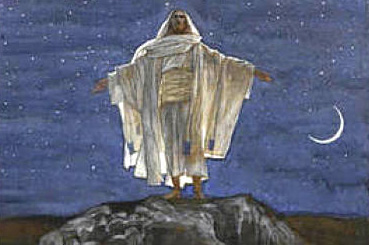
Thank you for this time-line. I find it excellent.
Thank you Msgr. I came to the blog today knowing you have something thoughtful for Holy Week and you sure did. I hope you have joyous Holy Week and Easter.
This is great!! Thanks Msgr!!
Lovely thoughts. I would print it out to keep at my fingertips, but my printer isn’t working at the moment.
Thank you though. I have really enjoyed your Lenten reflections.
Thanks for letting us know about your printer.
Par excellence, Monsignor. Thank you. I think I just read what I will use for our RCIA lesson this week (Mondays are when I usually write our lesson) My students will receive and discuss what you have provided to us.
Thank you. This is an excellent reflection for Holy Week.
Recall, as an addendum, that Clocks had not been invented at the time. Where we say 9 o’clock, the ancients would say “mid-morning”. Where we say 3 o’clock, they would say “mid-afternoon”.
Distances between major sites in Jerusalem are easy walking distance (if you are not weighed down by a heavy cross.)
The chief priests would have gone to Pilate as soon as possible after day-break. The Praetorium and Herod’s palace are less than a mile apart. Mark’s gospel has Jesus crucified (Led out for crucifixion) about 9 a.m.; and has the sky darkened about noon. We don’t know how much Precious Blood Jesus lost through the Crown of Thorns, with the soldiers mocking Him with “Hail, King of the Jews”, or “Prophecy to us, O Messiah! Who is it that just struck you?”
The Centurion in charge may have taken this Blood loss into account in fearing that Jesus would die on the way, and forcing Simon of Cyrene to help Jesus carry the cross. After all, Pilate had ordered that Jesus be crucified. His dying on the way would not comply with the orders.
Again, thank you.
TeaPot562
Although some scholars say that, by Jesus time they had begun naming hours, eg the 6th hour, the ninth hour etc.
Thank you Monsignor. This is very good description of our Lord’s last week. I must say that i look soo forward to hearing the Litany of The Saints on Saturday evening…. Very emotional, I.
Monsignor, thanks for this. After the Holy Thursday Mass, we go Visita Iglesia and visit as many and various Churches and meditate on the Sorrowful Mystery. With each decade prayed in each Church as a form of penitence. At the night of Good Friday after the liturgical commemoration, we go visit as many Churches again, like a wake we see the Santo Sepulcro and again pray a decade of the Sorrowful Mystery in each Church. A form of giving wake services to JESUS who was hastily laid in the tomb. Saturday is a day of solemn silence for the whole day as we wait for HIS Glorious Resurrection proclaimed in the Saturday Vigil Mass. YHWH SHAMMAH!
Love one another as I have loved You
Thank you Monsignor for bringing us back to those glorious days. Thank you Lord for what you did for me!
Thank you Monsignor, nice notes of reflection over the Triduum. Just connected with you on Twitter. Ive been following you now for the last 12 months. You have taught me to be spiritually stronger through Gods grace…. Thank you for opening my eyes as Ive gone from sight to insight. God bless you.
The world crucified Love.
Grandma has a family script for Jesus last week:
http://mygrandmatime.com/wp-content/uploads/2015/04/2015-Easter-script.pdf
Blessings!
Grandma